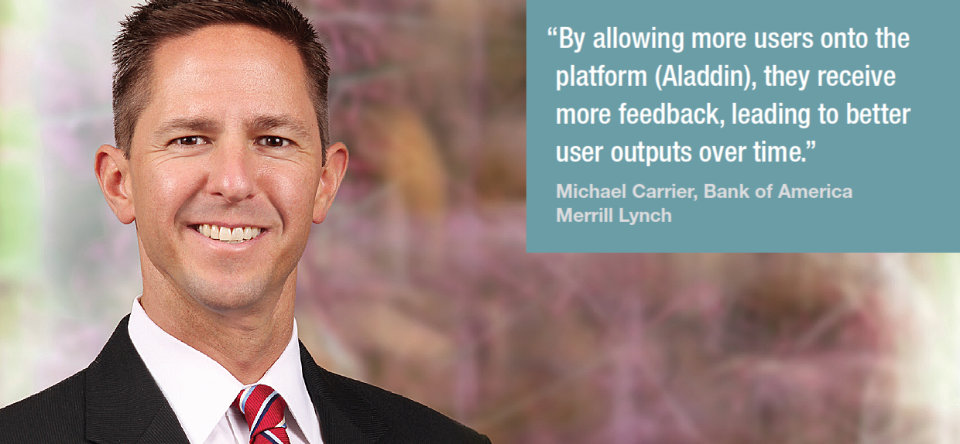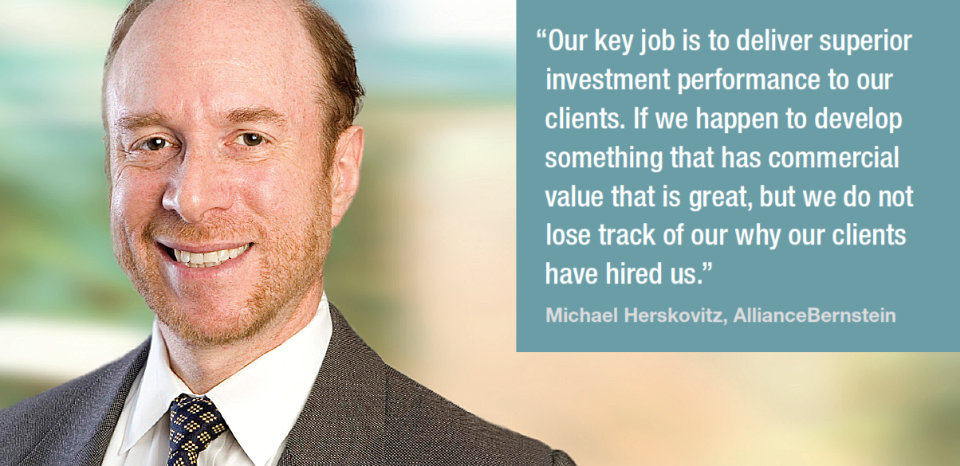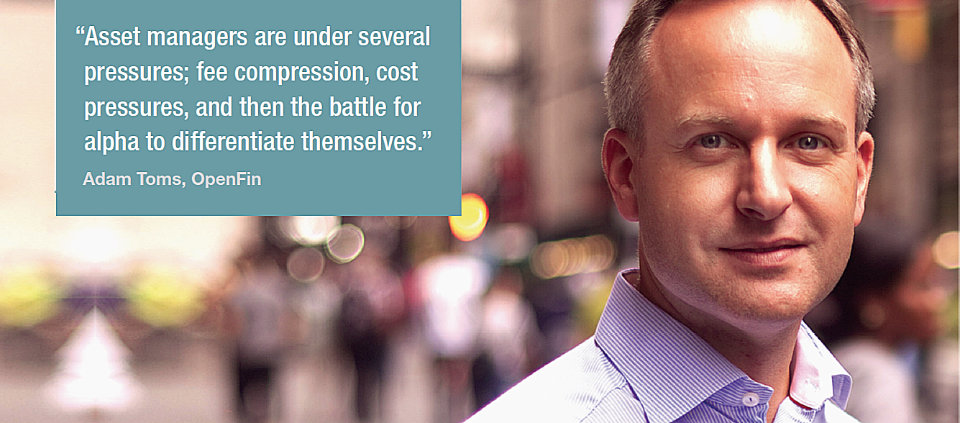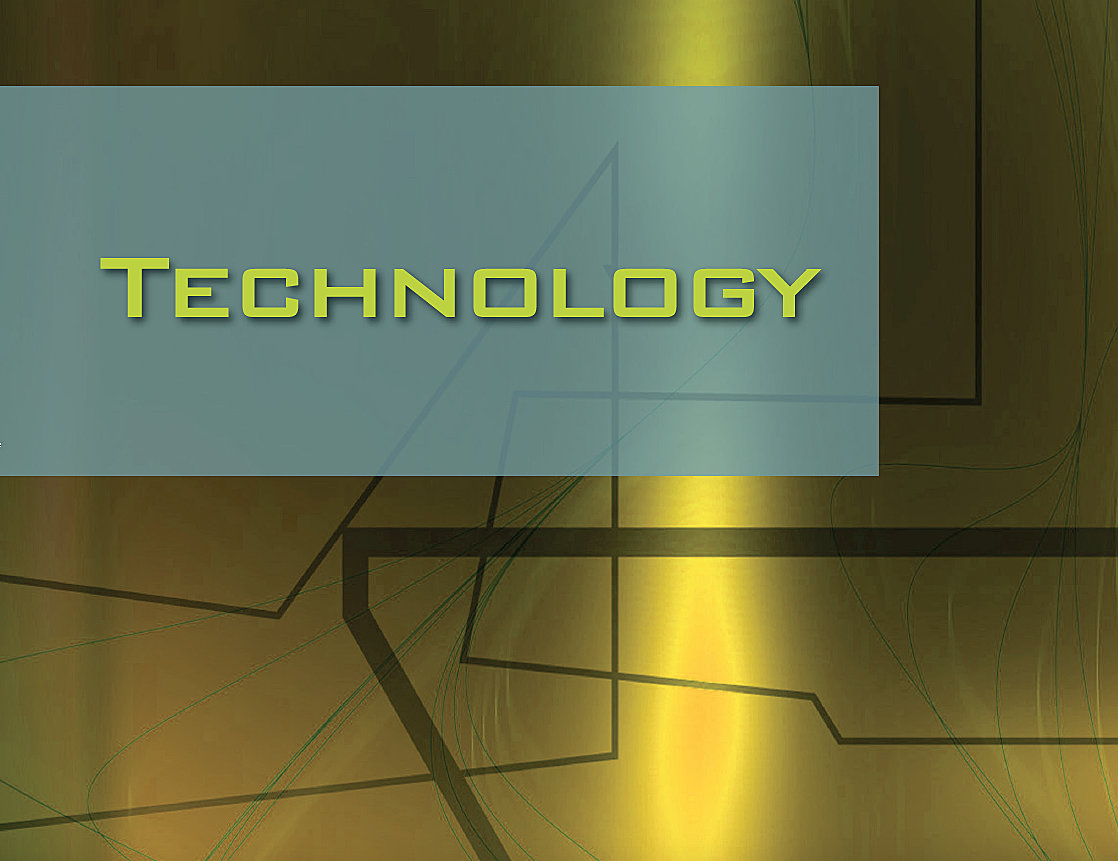Buy-side firms need to make secular decisions about whether to buy or sell technology to other asset managers. Dan Barnes reports.
In April, CEO of State Street, Ron O’Hanley, said his firm had 110 ongoing conversations with potential buy-side clients for its new fully integrated, front-to-back technology offering.
The State Street group, which includes its custodian bank, capital market business and asset management business, State Street Global Advisors (SSGA), had bought order management system (OMS) provider Charles River for US$2.6 billion in October 2018, to form the backbone of its IT solution, which is targeting buy-side firms, including the clients of its own sell-side operations.
The level of ambition that selling a monolithic technology platform entails was laid out when O’Hanley spoke to analysts in a Q1 earnings call on 23 April 2019.
“What you’re talking about here when you do this is a fundamental change in the way that the client itself operates,” he said. “Typically, they’ve got to move off some existing systems. There are typically a panoply of proprietary or small outside systems that they have to move off of, so these take time.”
Although making such a fundamental change sounds challenging, he said that the firm has seen a “much faster take-up” than expected, bringing forward the original expectation of making its first delivery of services in 2020.
A clear parallel to the front-to-back offering that State Street is providing can be made with BlackRock’s order and execution management system (O/EMS)Aladdin, which also provides wealth and risk management tools.
BlackRock, a major rival to SSGA has achieved considerable success with Aladdin, which was originally developed in-house, then later commercialised.
Seven days prior to the State Street call, at BlackRock’s Q1 earnings call, CEO and chairman Larry Fink had told analysts, “Technology is changing every aspect of the asset management landscape and BlackRock’s results, milestones and continuum innovation are only possible, because we prioritise making technology essential to our entire business. Strong global momentum continues in our Aladdin business driving 11% growth year-on-year in our technology services revenues.”
On the face of it this would appear to be a ripe market for State Street to enter. Aladdin counts major asset managers as clients including Invesco, Santander Asset Management, Morgan Stanley Investment Management and M&G. It has championed the single platform model, which has advantages – such as simplifying maintenance and software updates – but equally limits the extent to which the system can be customised.
“The thing is, when you get Aladdin you get the whole package, not just the O/EMS; there are pre-trade analytics, portfolio management, risk management,” says Fred Ponzo, principal at GreySpark. “They are winning business, they are very strong.”
Both State Street and BlackRock have acquired other technology providers, the former buying FX and fixed income transaction cost analysis provider BestX for an undisclosed sum last year, the latter acquiring alternative investment management software provider eFront for US$1.3 billion, in order to further reinforce their offerings.
Philosophical challenges to commercialised buy-side technology
In a research note in November 2018, Michael Carrier, analyst at Bank of America Merrill Lynch, wrote that Rob Goldstein, BlackRock’s chief operating officer and global head of BlackRock Solutions had given analysts a good insight into the advantages of commercialising technology.

“Aside from demand and generating an additional revenue stream, there were two important factors in the decision to allow customers and competitors to access Aladdin,” Carrier wrote. “The first is that the firm would likely be unable to invest in Aladdin at the current pace (3,500 tech employees and US$1 billion in tech spend) without these additional revenues. The second factor is that by allowing more users onto the platform, they receive more feedback, leading to better user outputs over time.”
State Street and BlackRock are not the only asset management providers to offer commercial technology. AllianceBernstein sold its ALFA tool to pre-trade analytics firm Algomi, which is supplying it to other asset managers, including PIMCO and T. Rowe Price, and has also taken a stake in Algomi, so that it will reap the rewards of any commercial success from the Algomi ALFA tool.
For systems developed in-house, a buy-side firm has to determine whether it will be handing over competitive edge to its rivals, which could impact its own support for clients. In some cases, asset managers see that as a line in the sand.
“We are not looking to distribute our trading technology commercially. We are a build shop, and we like having the early mover advantage,” says Erik Tumasz head of front office technology at Wellington Asset Management. “We also like being able to customise our platform to 100 per cent of what our trader needs.”

Michael Herskovitz, co-head of Technology and Operations at AllianceBernstein, says that Algomi ALFA was not originally developed with a commercial model in mind, and the advantage of holding it rather than selling it was seriously debated.
“There was a proprietary advantage to having ALFA, but we saw that from a wider industry perspective, adding significant liquidity to the corporate bond market would outweigh all specific benefits of that application,” he says. “To offer commercially you not only need the tools but the whole support infrastructure in place, which was one of the benefits of working with Algomi.”
AllianceBernstein does not have a defined strategy to build a comprehensive commercial technology offering along the lines of BlackRock and State Street; the firm is instead finding opportunities where they arise. For example, it has provided the middle and back office function for over-the-counter derivatives for the treasury and hedging portfolio of Equitable [formerly AXA Equitable] for some time, and has approached other third parties about that type of service.
“Our key job is to deliver superior investment performance to our clients,” he says. “If we happen to develop something that has commercial value that is great, but we do not lose track of our why our clients have hired us. Our business is all about operational leverage and if we see this as a way to gain operational leverage we will do that; if there is technology that we can provide to our end clients that is the real win-win situation.”
Rivals for attention
There are challenges to using technology provided by a rival. How important that is will be decided on a firm-by-firm basis. When Amundi acquired Pioneer Investments, an Aladdin user, it replaced the BlackRock system with its proprietary Amundi Leading Technology & Operation (ALTO) order and execution management system.
One buy-side bond trader, whose firm is in the process of assessing State Street’s BestX as a TCA tool, notes that even if commercial tech is seen as desirable, reassurance is needed if it is in the hands of another market player. “We did talk about [its ownership by State Street], but we were satisfied that the appropriate Chinese walls will be in place so that it is not a problem for us,” he says.
State Street’s O’Hanley has said the first wins for its new technology offering in this field are likely to come from adding services to existing Charles River users, leveraging the existing commercial relationship.
Fink has emphasised that Aladdin is strongly targeting portfolio construction for wealth managers, financial advisors and individual investors in addition to its existing targets. He also outlined an arrangement via BlackRock’s strategic alliance with Bank of New York Mellon, a major rival to State Street’s custody business, offering Aladdin to the bank’s securities servicing clients.
Building broader service offerings and moving beyond a pure technology play could create a far more compelling offering. “By enabling access to investment management and servicing capabilities on one platform, clients will be able to further optimise their operating models and reduce operating expenses,” Fink said.
State Street’s chief financial officer, Eric Aboaf said on the firm’s Q1 call that a partnership-based service offering would not prove as profitable as the full service offering which his own firm was making into an: “US$8 billion revenue pool in the front office that we can now secure, grow, expand and deliver on.”
He said, “A custodian will plug into those front-office systems, whether it’s with Aladdin or some of the other front-office providers. In that case the custodian doesn’t earn materially more in revenues. Those revenues are already sitting there in the office system for the front-office provider.”
Components vs platforms
The “panoply of proprietary or small outside systems” that O’Hanley observed exists today could be hard to shift. For example, the ability to connect up different systems, that start-up OpenFin is providing, has gained wide-spread support in the trading community across buy- and sell side.

“Asset managers are under several pressures; fee compression, cost pressures, and then the battle for alpha to differentiate themselves,” says Adam Toms, CEO for Europe at OpenFin. “We are playing a role across those areas in that we can reduce technology costs over time, while making the traders more productive and maintaining governance, while also tackling costs saving and performance.”
Not every buy-side firm is content to adopt a single platform across the business. Customisation of tools can be a competitive advantage, with faster delivery better able to support the end investors.
“We have a lot of client mandates for custom products for custom workflows, and we are able to do those pretty quickly,” notes Tumasz. “We had a number of mandates where we have been asked to do something for a particular client; it was not part of our normal workflow and it’s helped us attract newer clients.”
Although Aladdin has been successfully adopted for fixed income trading, which it was originally built to manage, buy-side users often report they will use it alongside other technologies for trading in other assets such as equities.
State Street’s own ‘New Routes to Growth’ study published in December 2018 found that 61% of respondents were taking an incremental approach to adopting emerging technologies rather than re-engineering their IT ecosystems. Wholesale technology replacement carries risks and costs, and needs a commensurate upside to make it worthwhile.
©TheDESK 2019
©Markets Media Europe 2025























